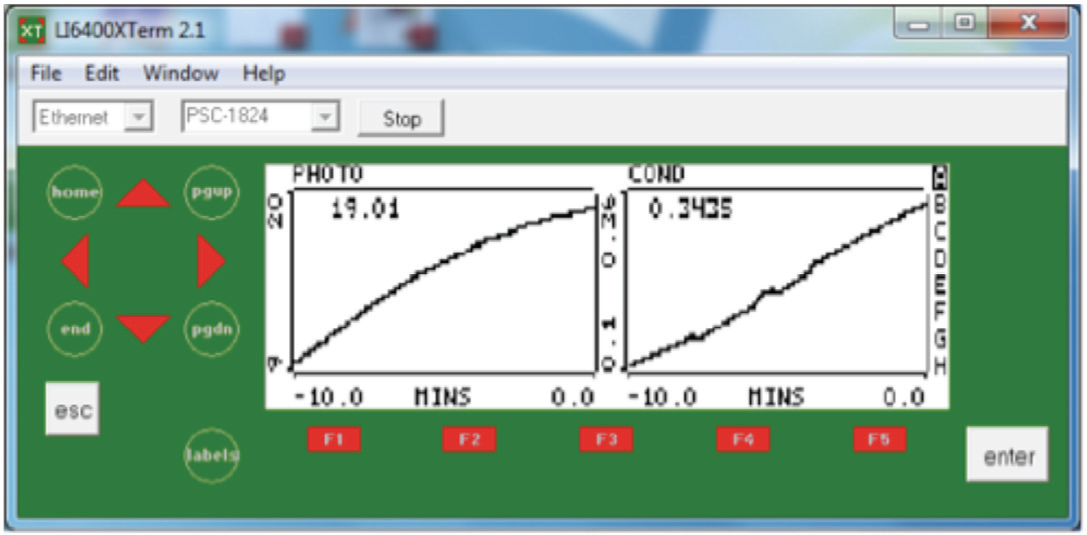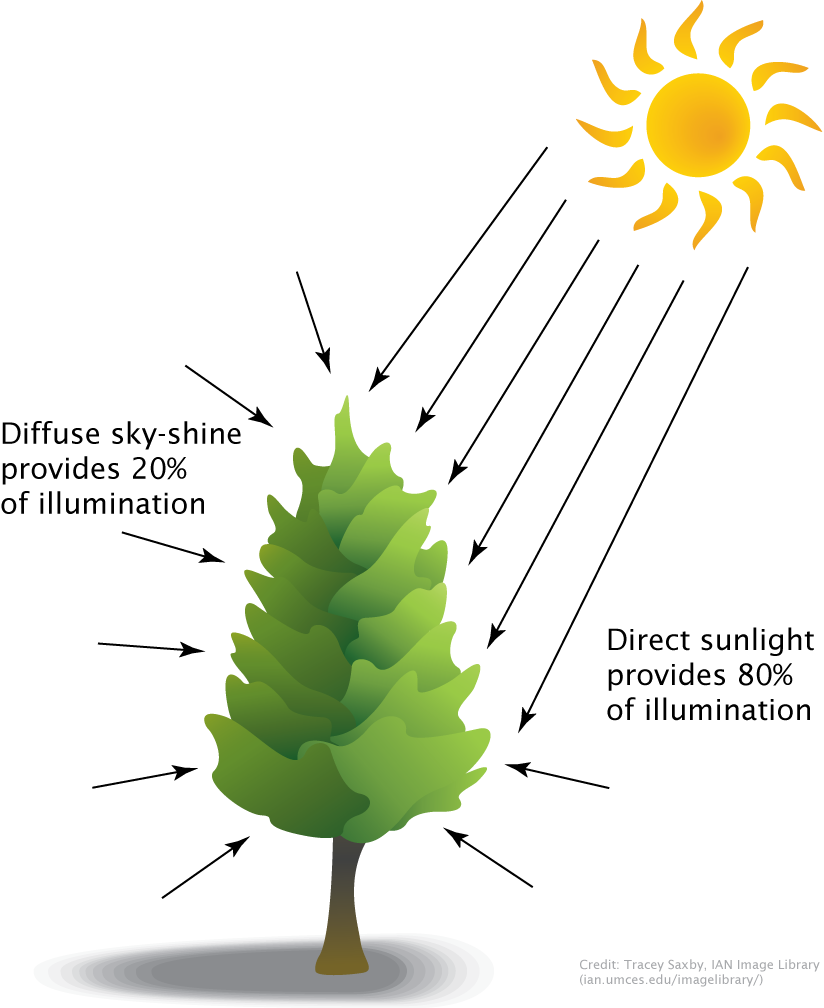With the LI-6400XT Portable Photosynthesis System
Printable PDF: Faster Field Measurements of Asat
Instructions for faster field measurements of Asat.
Measurement of the light-saturated rate of net CO2 fixation under ambient conditions (Asat) is an important physiological parameter for the investigation of genetic differences in plant breeding programs, ecological studies, and response to environmental stresses or chemical treatments.
To obtain a reliable mean value of AAsat for a plot, treatment or species, numerous measurements may need to be averaged. One challenge is that leaves can take 20 to 30 minutes to fully acclimate after being exposed to saturating light intensity. The screen capture of the LI-6400XT display below shows a 10 minute moving strip chart window of a shaded rice leaf acclimating to a light level of 1500 μmol of photons/m2/s.
This particular leaf took nearly 25 minutes to reach its maximum assimilation rate, or the Asat value of 22 μmol CO2/m2/s, with a stomatal conductance of 0.45 mol/m2/s. In a field plot survey, if each leaf were to take 25 minutes to reach a stable Asat value, it could take several hours to take just 10 measurements.
Methods
The first step in optimizing your Asat measurement strategy is to determine the light level required to be safely on the light response plateau. Typically, actively growing field C3 leaves (wheat, rice, soybeans, etc.) will saturate at light levels of about 1500 μmol/m2/s, whereas leaves of C4 species (maize, sugar cane, etc.) may not be saturated even at 2000 μmol/m2/s. Leaves of shade tolerant species may saturate at much lower light levels. It is important to have an idea of the light level required to saturate the species or treatment under investigation by running a few rapid light response curves as described in Chapter 4 of the LI-6400XT manual.
Having decided on a suitable light level required for obtaining Asat, one simple way to decrease the waiting time to take Asat in the field is to pick similarly positioned leaves that are perpendicular to the direct beam of the sun. The figure below shows the typical illumination geometry under sunny conditions. When the solar disc is clear of clouds, about 80% of the incoming light will be in the direct beam and about will be 20% in the form of diffuse sky shine. Leaves that are perpendicular to the solar beam will most likely be receiving total direct and diffuse illumination of above 1500 μmol/m2/s and will be light saturated, whereas leaves facing in the opposite azimuth to the sun angle may be receiving no more than 400 μmol/m2/s of diffuse sky illumination. To check the light level that the leaves are receiving, the LI-6400XT external quantum sensor, which is mounted on the sensor head, can be placed next to the leaf and oriented at about the same azimuth and zenith angles as the sunlit leaf.
To make sure that gas exchange measurements are taken at a stable saturating light level and don’t vary with the movement of clouds, it can be very helpful to employ the 6400-02B or the 6400-40 LED light source chambers and set their light levels to a suitable saturating value. This lets the sun do the work of acclimating the leaves to high light levels and then we pick the leaves that are ready so the measurement can be taken much more quickly – often in less than 2 minutes instead of 20 to 30 minutes. The LED light source is used to ensure that the light level is stable and is set to a value that is on the light response curve plateau.
When numerous field Asat measurements are required, setting up the LI-6400XT environmental controls (flow rate, CO2, humidity, temperature) for fast operation is desirable. Contact LI-COR to learn more about optimizing your LI-6400XT for field surveys or detailed lab gas exchange measurements.


